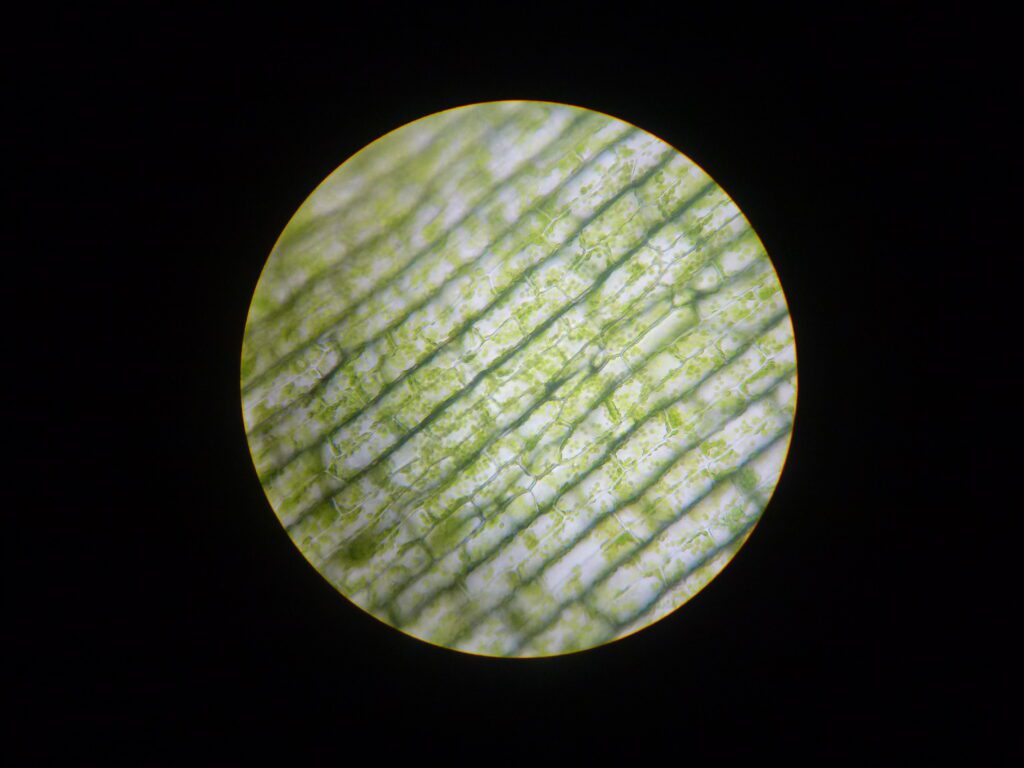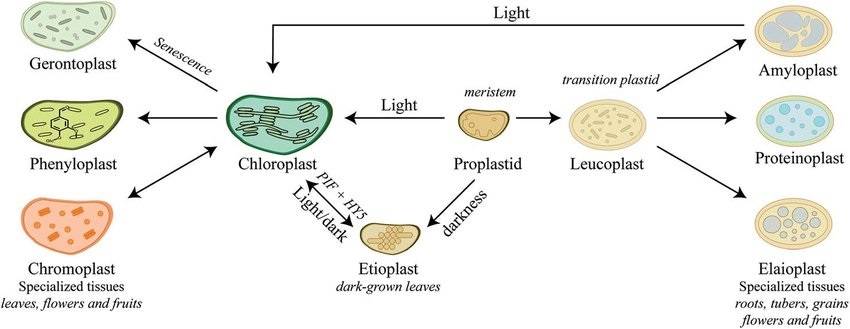General features
Chloroplasts are characteristic organelles of eukaryotic plants and algae, if observed under an optical microscope they appear green, this is due to the presence, inside them, of chlorophyll molecules (fig. 1). In chloroplasts, chlorophyll photosynthesis takes place.

Chloroplasts in plants are generally found in parts exposed to light and can be numerous, as in higher plants, or single, as in lower plants. According to the plant species considered, the chloroplasts have different shapes and sizes.
Furthermore, according to the endosymbiotic theory, the organelles in question originated from a symbiosis between cyanobacteria and heterotrophic amoeboid organisms. Like mitochondria, chloroplasts also have circular DNA and duplicate themselves through a simple cleavage from pre-existing chloroplasts.
Development
Chloroplasts arise from the differentiation of proplastids. The proplastids differ, according to the needs of the plant, in:
- chromoplasts (in flower petals);
- leukoplasts (in reserve tissues);
- chloroplasts (in the leaves).
The fundamental factor that allows the differentiation of the proplastid in chloroplast is the presence of light, in fact, in the darkness, the proplastids are not able to give rise to chloroplasts, but to etioplasts.
Etioplasts, containing a yellow pigment precursor of chlorophyll, when exposed to light regularly develop into chloroplasts and chlorophyll is synthesized starting from its precursor (fig. 2).

Structure
The photosynthetic organelles usually have a rounded or lenticular shape, have a diameter of 2-10 µm and a thickness of about 1 µm.
They have an external membrane, permeable to numerous molecules, and an internal membrane, which is more selective. The two membranes are not connected to each other, but separated by the intermembrane space.
The fluid inside the chloroplast is called stroma and contains enzymes, starch granules, ribosomes and circular DNA. It is in the stroma that the Calvin cycle, the dark phase of photosynthesis, takes place.
Inside the stroma we find the thylakoids, flattened discs stacked one on top of the other that together form the grains of the thylakoids, connected to each other by portions of the membrane: the stromatic lamellae. In the thylakoids, on the other hand, there is the luminous phase of the photosynthetic process (fig. 3).

(Credit: https://it.123rf.com/photo_41130006_struttura-di-un-cloroplasto-cloroplasti-si-trovano-solo-nelle-cellule-vegetali-%C3%A8-dove-la-fotosintesi-a.html)
Function
In phototrophic eukaryotes, chloroplasts are the organelles responsible for carrying out chlorophyll photosynthesis. By chlorophyll photosynthesis we mean a biochemical process that allows to synthesize organic carbon starting from light energy and inorganic carbon.
Thanks to chlorophyll it is possible to capture solar energy and transform it into chemical energy (ATP and NADPH), which in turn is used to produce glucose from atmospheric carbon dioxide.
Photosynthesis consists of two phases: the light phase and the dark phase (or Calvin cycle) (fig. 4):
- The light phase occurs in the thylakoids, solar energy is absorbed producing ATP and NADPH used later. During this phase, the photolysis of the water also takes place, thus releasing oxygen;
- The dark phase (or Calvin cycle) occurs in the stroma. Using the chemical energy produced by the light phase, the inorganic carbon (present in carbon dioxide) is transformed into organic carbon molecules such as glucose.

Sources:
- https://www.chimica-online.it/biologia/cloroplasti.htm
- https://www.chimica-online.it/biologia/fotosintesi-clorofilliana.htm
- https://online.scuola.zanichelli.it/industriagroalimentare-files/biologia-fotosintesi-clorofilliana.pdf
- https://www.sapere.it/enciclopedia/cloroplasto.html
- https://www.treccani.it/enciclopedia/cloroplasto/
- https://www.treccani.it/enciclopedia/cloroplasto_(Enciclopedia-della-Scienza-e-della-Tecnica)/
- http://www.tuttochimica.it/biologia_cloroplasti.asp
- https://it.wikipedia.org/wiki/Cloroplasto
- https://www.microbiologiaitalia.it/didattica/cloroplasti/